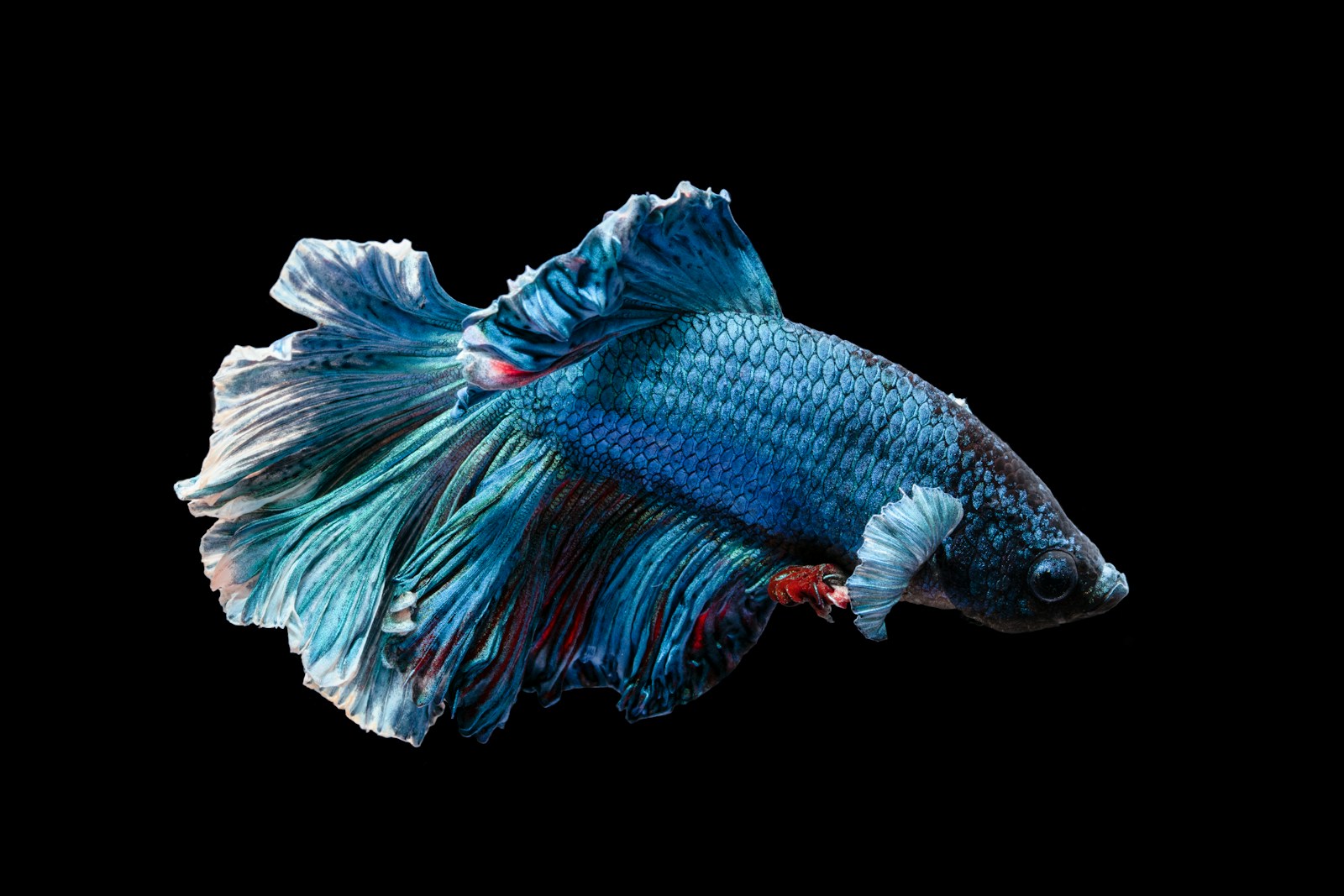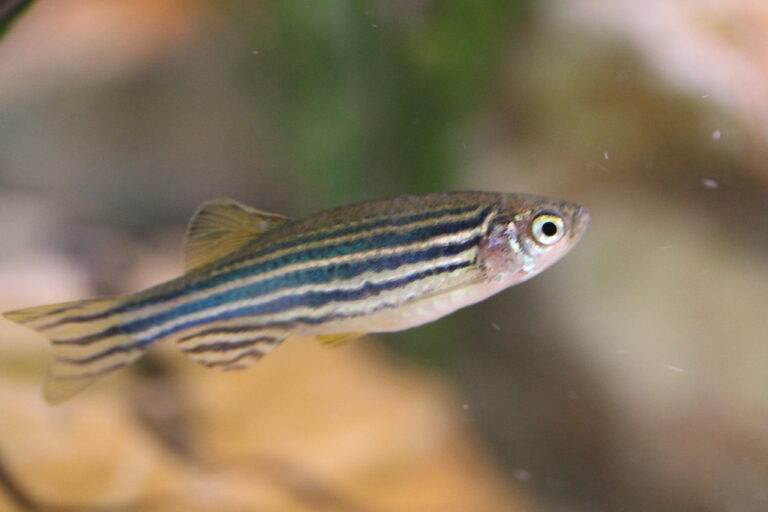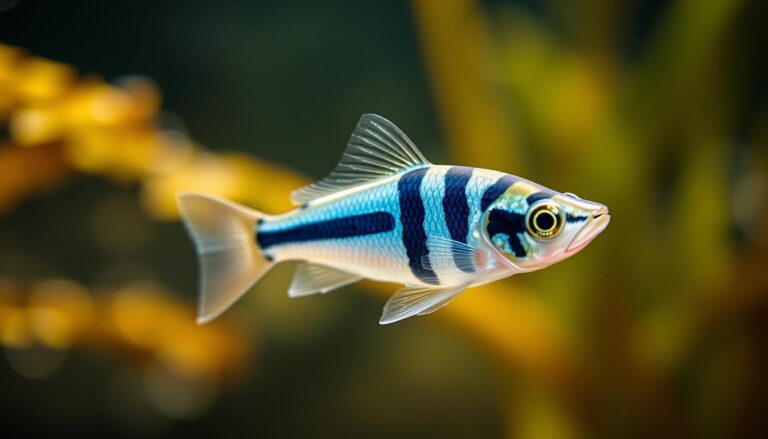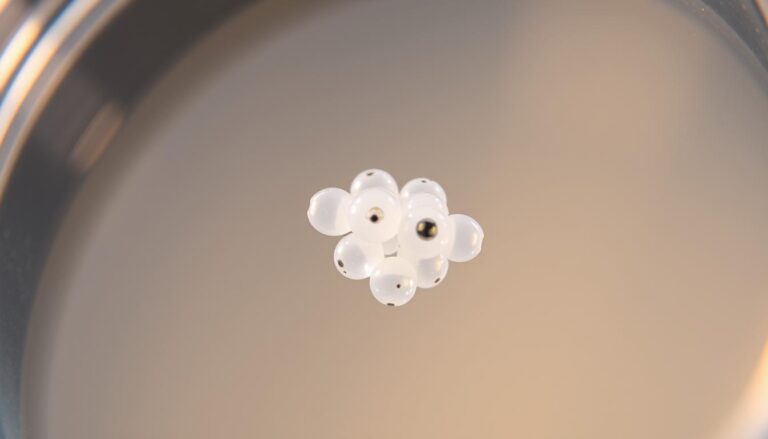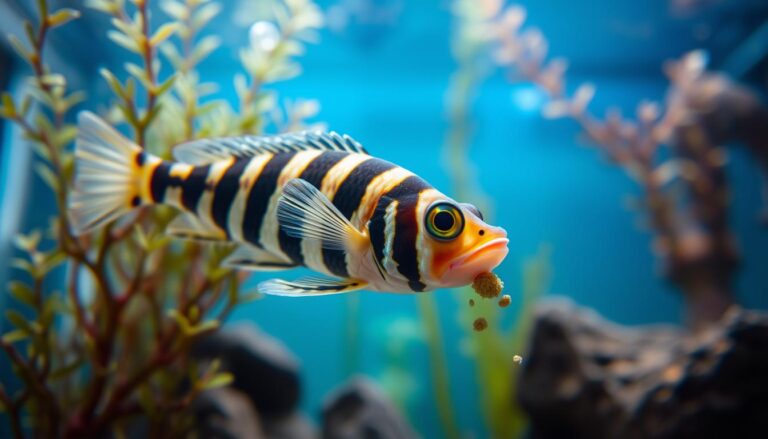Betta Fish Tank Mates: Choosing the Right Companions
Did you know your betta fish might actually thrive with the right tank mates instead of living alone? Discover how to create a peaceful community aquarium while challenging the myth that betta fish can’t coexist with others. This guide explores the science and strategies behind selecting compatible betta fish tank mates, ensuring harmony in your underwater world.

Whether you’re a new aquarist or an experienced hobbyist, this article breaks down the essentials of betta fish tank mates—from behavior analysis to habitat setup. Learn from real case studies and expert tips to avoid common mistakes that cause stress or conflict.
Table of Contents
Key Takeaways
- Picking the right betta fish tank mates reduces aggression and improves fish health.
- Water conditions and tank size play a big role in betta compatibility.
- Case studies show some species get along better than others.
- Stress signs in bettas often point to incompatible tank mates.
- Smart aquascaping helps create safe spaces for betta fish tank mates.
Introduction to Betta Fish Tank Mates
Betta fish are colorful, but they need careful thought when choosing tank mates. Understanding their wild nature is key. They prefer calm waters but are known for being aggressive, making community tanks tricky.
Overview of Betta Behavior
In the wild, bettas defend their territory. In tanks, they show aggression by fin-flaring. They might chase or attack fish with long fins.
Too many fish in the tank can stress them out. Look for signs like hiding, not eating, or fast breathing. These are signs of stress.
The Importance of Compatible Companions
Choosing the right tank mates is crucial. Here are some tips:
- Avoid long-finned fish to prevent bullying
- Choose active but non-aggressive fish
- Make sure they like the same water temperature (75–82°F)
Peaceful fish like cherry shrimps or corydoras catfish work well. Stay away from aggressive fish like cichlids. A peaceful tank needs calm, mid-water swimmers. Research and watch your fish to create harmony.
Understanding Betta Fish Behavior and Needs
Betta fish are naturally territorial and can show aggression, mainly during feeding or breeding. Their flowing fins and vibrant colors make them stand out. But, these traits also draw attention from other fish. To find the best tank mates for betta fish, it’s important to match their habits.
Bettas do well in warm water (78–80°F) with stable pH levels (6.5–7.5). They also need space to swim and hide.

- Aggression: Bettas may nip at finned fish, so calm species like guppies or corydoras work well.
- Space: A 10+ gallon tank reduces stress and territorial disputes.
- Hiding spots: Plants like java fern or driftwood create safe zones, reducing confrontations.
| Betta Behavior | Compatibility Factor | Recommended Species |
|---|---|---|
| Fin-nipping triggers | Slower swimmers | Platyfish, Otocinclus |
| Territorial displays | Non-competitive species | Shrimp, Mystery Snails |
Aquarium experts agree: bettas prefer companions that avoid their personal space. Overcrowding stresses them, so select species with similar activity levels. By aligning their needs with tank setup and species choices, harmony in the tank is achievable.
Case Study: Creating a Harmonious Betta Community Tank
Real-world examples show how compatible tank mates for bettas can thrive together. Let’s explore proven setups where bettas coexist peacefully with other species.
Real-Life Success Stories
- Aquarium hobbyist Sarah Lee combined her betta with neon tetras and corydoras catfish, using dense plants for hiding spots.
- In Florida, a community tank with a betta, ghost shrimp, and guppies succeeded by maintaining stable water parameters (pH 6.8–7.2, temperature 78–80°F).
- One breeder paired bettas with platyfish, using tall java ferns to reduce territorial disputes.

Key Observations from the Case Study
Shared patterns from these setups reveal essential strategies:
- Provide hiding spots like driftwood or plants to reduce stress.
- Keep feeding areas separate to avoid competition.
- Monitor tank size—minimum 10–20 gallons for a small community.
“Slow, steady introductions made all the difference. I let them get used to each other over a week.” – Aquarium Enthusiast, Mark
These stories prove that with patience and smart planning, compatible tank mates for bettas can create vibrant, stress-free environments. Observe behaviors closely and adapt setups to each fish’s needs.
Identifying Ideal Tank Mates for Betta Fish

Finding the right tank mates for betta fish starts with knowing which species get along. Bettas like calm places, so picking the right friends means balancing their needs with others. This keeps the peace in the tank.
Species Compatibility Explained
Small, peaceful fish like neon tetras, corydoras catfish, and mystery snails usually get along with bettas. Stay away from big fish that might nip at betta’s fins. Important things to remember include:
- Size: Tank mates should be smaller than bettas to avoid fights.
- Behavior: Fish that stay in the middle or bottom of the tank are best.
- Feeding habits: Choose species that eat similar foods to avoid competition.
Environmental Considerations
Water quality is crucial. Keep the pH between 6.5–7.5 and the temperature at 75–82°F. Adding plants like java fern or floating plants helps. They give fish places to hide and feel safe. A 10-gallon tank is a good size to prevent fights.
“Compatibility isn’t just about species—it’s about creating a space where everyone feels safe,” says Dr. Amy Lee, a fish behavior specialist.
Do your homework on each species before adding them. Introduce new fish slowly and watch how they interact. Taking these steps helps bettas and their tank mates live happily together.
Expert Tips on betta fish tank mates
Creating a thriving betta fish community tank needs careful planning. Make sure your tank is at least 10 gallons to reduce stress and aggression. Always quarantine new fish to prevent disease spread. Keep water clean with weekly partial water changes and test pH levels regularly.
- Acclimate fish slowly: Float betta in a sealed bag for 15–20 minutes to match tank temperature before release.
- Introduce non-aggressive species first, like tetras or Corydoras catfish, to establish a calm environment.
- Provide hiding spots with plants, driftwood, or ceramic caves to give bettas space to retreat when stressed.

Watch interactions closely during the first 48 hours. Signs of aggression—flashing, fin nipping, or constant chasing—mean it’s time to separate fish. For persistent issues, use a divider or create a second compartment with a 5-gallon tank as a safe zone. Follow Chewy’s guide for species compatibility charts. Maintain water temperature between 78–80°F using a reliable heater. Avoid overcrowding; allow 1 gallon of water per inch of fish. Regular feeding rotations and varied diets keep bettas healthy and less territorial. Patience is key—some bettas take weeks to adjust. With these steps, your betta fish community tank can become a vibrant, stress-free ecosystem.
Assessing Compatibility in Betta Fish Tank Mates
Start by watching how they act. If they’re aggressive or nip fins, they might not get along. Bettas might see fish with flowing fins as rivals.
- Aggressive species like tiger barbs should be avoided.
- Peaceful bottom-dwellers such as Corydoras or cherry shrimp often coexist well.
- Watch how they act when you introduce them to see if they’re stressed.
Behavioral Traits to Consider
It’s important to match their activity levels and social needs. Online forums suggest that schooling fish like danios work well in big spaces. Shy fish like mollies do well if the water is right.
Water Conditions and Safety
Keeping the water stable is key for betta fish tank mates. Here’s a safety guide:
| Parameter | Betta Requirements | Compatible Species |
|---|---|---|
| Temperature | 78-80°F | Matches betta ranges |
| pH | 6.5-7.5 | Adaptable species preferred |
| Ammonia/Nitrite | 0 ppm | Requires consistent testing |
Change the water regularly and use dechlorinated water. Don’t overcrowd the tank. Betas need about 5 gallons for each inch of fish.
Building a Diverse and Balanced Aquarium
Creating a thriving aquarium for bettas and their tank mates requires careful planning. A balanced ecosystem is key for each species to thrive. Start by adding plants like Java Fern or Anubias. They provide hiding spots and help keep the water quality stable.
Use vertical layers to create zones in the tank. Open spaces allow bettas to swim freely. Dense plant clusters offer shelter for smaller species. Shrimp, such as Amano or Cherry Shrimp, are great tank mates for bettas because they control algae without causing aggression.
- Add driftwood or caves for bettas to claim as territories, reducing confrontations.
- Choose bottom-dwelling species that stay out of the betta’s mid-water zone.
- Incorporate floating plants like Hornwort to soften light and create shaded areas.
Regular monitoring is crucial for a smooth adaptation of all inhabitants. Watch their interactions daily and adjust the layout if needed. A well-balanced setup supports bettas and enhances the tank’s beauty. By layering plants, creating zones, and choosing compatible species, you create a healthy ecosystem.
Overcoming Challenges with Betta Fish Tank Mate Options
Choosing the right tank mates for betta fish needs careful planning. Aggression and stress can come from too many fish or fighting over space. Make sure the tank is big enough and has hiding spots to reduce fights.
Dealing with Aggression and Stress
Betta fish do best in well-planned environments. A 20-gallon tank is big enough for peaceful species like neon tetras. Add driftwood or plants like Anubias to create areas for bettas to claim without fighting.
Watch for signs of aggression like fin-nipping or chasing. If you see this, separate the aggressive fish right away.
Strategies for Conflict Resolution
Here are some tips to keep the peace:
- Use floating plants to soften the light and reduce stress.
- Feed in small portions to avoid competition. Target foods like brine shrimp can distract aggressive eaters.
- Check on the fish every day. If aggression continues, remove the aggressive fish.
Being patient and making adjustments is key to success. Regular water tests and keeping the water temperature stable (78-82°F) help keep the community balanced. Remember, some bettas like to be alone—always put their happiness first.
Innovative Ideas for a Thriving Betta Fish Community
Make your betta’s home a lively place with smart design. Aquascaping is more than just making it look good. It’s about creating areas for your fish to play and hide. Start by adding vertical layers with plants like anubias or java fern. These plants give shy fish like Pangio kuhlii (Kuhli Loach) places to hide.
Use driftwood or ceramic caves to make the tank feel like their natural home. This helps them act naturally.
- Include floating plants like Lemna to dim light and reduce betta stress
- Place flat stones at the tank bottom for algae-scavenging Corydoras species to feed
- Use dense vegetation to create barriers separating territories, reducing aggression
Group schooling fish like Trigonostigma heteromorpha (Harlequin Rasbora) in open spaces. This helps them feel safe and happy. Add slow-moving bottom dwellers like Pomacea bridgesii (Mystery Snails) for a peaceful tank. Proven species pairings do well when they have their own areas. For example, Thalassinidea (Ghost Shrimp) can clean up debris in dark spots while bettas swim in the open.
Try moving decorations to see how your fish react. Watch how bettas play with Poecilia reticulata (Feeder Guppies) in the middle of the tank. Change the layout with the seasons to keep things exciting. A good betta community needs a mix of beauty and function.
Conclusion
Creating a thriving community for betta fish starts with choosing tank mates that have similar needs. Successful setups show that peaceful species like neon tetras or dwarf gouramis can live together. This is when water conditions and space are just right.
Betta fish do best in environments with species that don’t fight or compete. Always check if a species is compatible before adding it to your tank. Watch how they interact, closely, in the first weeks.
Plants like java moss and driftwood help by giving fish places to hide. This reduces stress. Keeping water parameters stable is also crucial to avoid fights. Good filtration and regular water changes help keep the tank healthy.
A well-planned aquarium is both beautiful and functional. By focusing on betta behavior and habitat, hobbyists can create lively communities. Watch your fish and make changes if needed. With patience and care, your betta and friends will thrive in a peaceful space.
FAQ
What are the best tank mates for betta fish?
Good tank mates for betta fish are peaceful ones like neon tetras and corydoras catfish. Snails are also good. It’s key to pick fish that won’t fight with bettas.
Can I keep guppies with my betta fish?
Keeping guppies with bettas can be tricky. Some bettas might get along, but others might get aggressive. Watch them closely if you decide to keep them together.
What types of fish are not compatible with bettas?
Fish that don’t get along with bettas include fin-nippers like barbs. Also, aggressive species like cichlids and fish with long fins are not good. They might make bettas territorial.
How can I assess betta fish tank mate compatibility?
To check if fish are good tank mates for betta fish, watch their behavior. Choose peaceful fish that don’t fight. Make sure their living space is right for all.
Is it safe to have shrimps as betta fish tank mates?
Some shrimp species, like cherry shrimp, can live with bettas. But, big bettas might see small shrimp as food. Give shrimp lots of places to hide.
How do I create a community tank for my betta fish?
For a community tank, pick fish that get along with bettas. Add lots of hiding spots and plants. Keep the water the right temperature and clean for all fish.
Can I keep multiple bettas in one tank?
No, you shouldn’t keep many male bettas together because they fight a lot. Female bettas can live in groups, but introduce them slowly and give them lots of space.
What environmental considerations should I keep in mind for betta fish tank mates?
Think about the environment for betta fish tank mates. Keep the water at 76-82°F. Use good filters, provide hiding spots, and keep the water clean and oxygen-rich to reduce stress.

